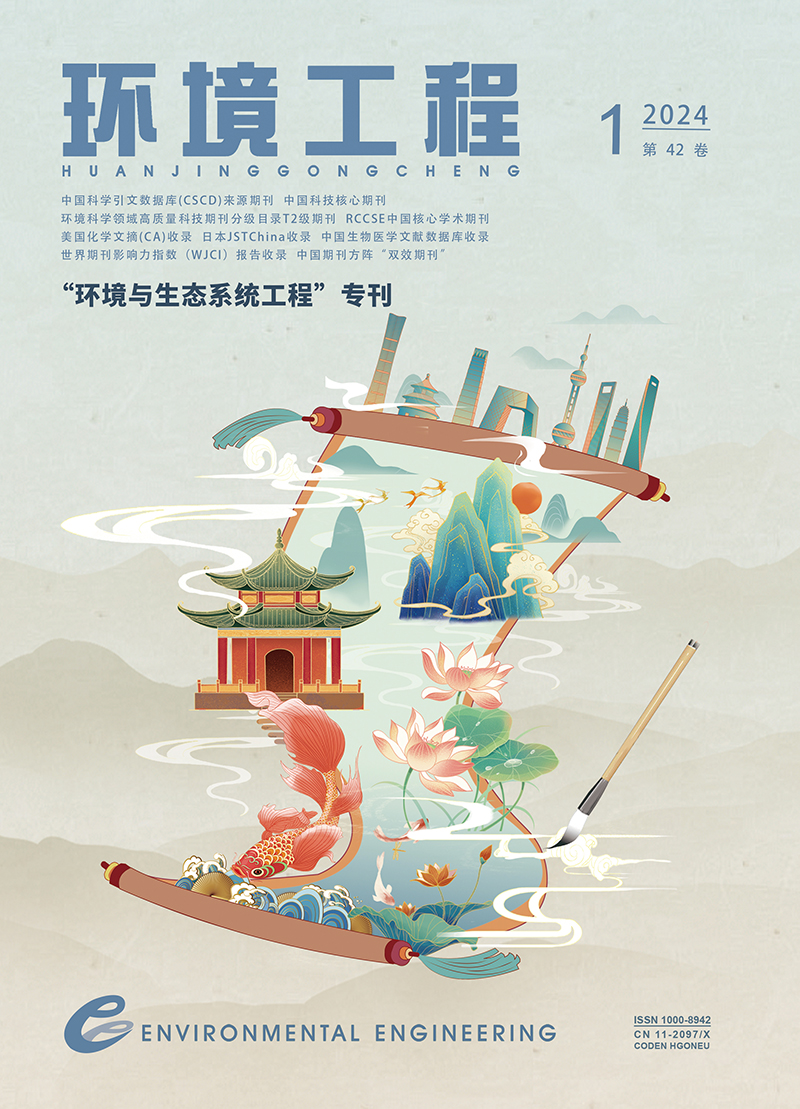| [1] |
FAN D,O’CARROLL D M,ELLIOTT D W,et al.Selectivity of nano zerovalent iron in in situ chemical reduction:challenges and improvements[J].Remediation Journal,2016,26(4):27-40.
|
| [2] |
杨思明,刘爱荣,刘静,等.硫化纳米零价铁研究进展:合成、性质及环境应用[J].化学学报,2022,80(11):1536-1554.
|
| [3] |
XU J,LI H,LOWRY G V.Sulfidized nanoscale zero-valent iron:tuning the properties of this complex material for efficient groundwater remediation[J].Accounts of Materials Research,2021,2(6):420-431.
|
| [4] |
FAN D,O’BRIEN JOHNSON G,TRATNYEK P G,et al.Sulfidation of nano zerovalent iron (nZVI) for improved selectivity during in-situ chemical reduction (ISCR)[J].Environmental Science & Technology,2016,50(17):9558-9565.
|
| [5] |
XU J,WANG Y,WENG C,et al.Reactivity,selectivity,and long-term performance of sulfidized nanoscale zerovalent iron with different properties[J].Environmental Science & Technology,2019,53(10):5936-5945.
|
| [6] |
LI H,YANG W,WU C,et al.Origin of the hydrophobicity of sulfur-containing iron surfaces[J].Physical Chemistry Chemical Physics,2021,23(25):13971-13976.
|
| [7] |
KIM E J,KIM J H,AZAD A M,et al.Facile synthesis and characterization of Fe/FeS nanoparticles for environmental applications[J].ACS Applied Materials & Interfaces,2011,3(5):1457-1462.
|
| [8] |
HAN Y,YAN W.Reductive dechlorination of trichloroethene by zero-valent iron nanoparticles:reactivity enhancement through sulfidation treatment[J].Environmental Science & Technology,2016,50(23):12992-13001.
|
| [9] |
ZHANG W X,ELLIOTT D W.Applications of iron nanoparticles for groundwater remediation[J].Remediation Journal,2006,16(2):7-21.
|
| [10] |
LI J,ZHANG X,SUN Y,et al.Advances in sulfidation of zerovalent iron for water decontamination[J].Environmental Science & Technology,2017,51(23):13533-13544.
|
| [11] |
XU J,CAO Z,ZHOU H,et al.Sulfur dose and sulfidation time affect reactivity and selectivity of post-sulfidized nanoscale zerovalent iron[J].Environmental Science & Technology,2019,53(22):13344-13352.
|
| [12] |
BHATTACHARJEE S,GHOSHAL S.Optimal design of sulfidated nanoscale zerovalent iron for enhanced trichloroethene degradation[J].Environmental Science & Technology,2018,52(19):11078-11086.
|
| [13] |
GARCIA A N,ZHANG Y,GHOSHAL S,et al.Recent advances in sulfidated zerovalent iron for contaminant transformation[J].Environmental Science & Technology,2021,55(13):8464-8483.
|
| [14] |
CAO Z,XU J,LI H,et al.Dechlorination and defluorination capability of sulfidized nanoscale zerovalent iron with suppressed water reactivity[J].Chemical Engineering Journal,2020,400:125900.
|
| [15] |
XU J,AVELLAN A,LI H,et al.Sulfur loading and speciation control the hydrophobicity,electron transfer,reactivity,and selectivity of sulfidized nanoscale zerovalent iron[J].Advanced Materials,2020,32(17):1906910.
|
| [16] |
LI H,SI R,WANG W,et al.Sulfidated nanoscale zero-valent iron dispersed in dendritic mesoporous silica nanospheres for degrading tetrabromobisphenol A[J].Colloids and Surfaces A:Physicochemical and Engineering Aspects,2021,621:126586.
|
| [17] |
XU J,CAO Z,WANG Y,et al.Distributing sulfidized nanoscale zerovalent iron onto phosphorus-functionalized biochar for enhanced removal of antibiotic florfenicol[J].Chemical Engineering Journal,2019,359:713-722.
|
| [18] |
ZHANG J,YU H,XU W,et al.Adsorption-reduction coupling mechanism and reductive species during efficient florfenicol removal by modified biochar supported sulfidized nanoscale zerovalent iron[J].Environmental Research,2023,216:114782.
|
| [19] |
何思莹.高岭土负载硫化纳米零价铁激活过硫酸盐去除电子垃圾拆解地土壤中的十溴联苯醚[D].太原:太原理工大学,2019.
|
| [20] |
王亚浩,邵欠欠,张练,等.膨润土负载硫化纳米零价铁去除对硝基苯酚的研究[J].环境污染与防治,2019,41(3):329-333.
|
| [21] |
徐琪.硫掺杂黏土矿物纳米铁复合材料的制备及其性能研究[D].兰州:西北民族大学,2019.
|
| [22] |
TAO N R,SUI M L,LU J,et al.Surface nanocrystallization of iron induced by ultrasonic shot peening[J].Nanostructured Materials,1999,11(4):433-440.
|
| [23] |
HOCH L B,MACK E J,HYDUTSKY B W,et al.Carbothermal synthesis of carbon-supported nanoscale zero-valent iron particles for the remediation of hexavalent chromium[J].Environmental Science & Technology,2008,42(7):2600-2605.
|
| [24] |
FAN M,YUAN P,BERGAYA F,et al.A critical textural evolution study of zerovalent iron/montmorillonite nanosized heterostructures under various iron loadings[J].Clays and Clay Minerals,2011,59:490-500.
|
| [25] |
FAN M,YUAN P,CHEN T,et al.Synthesis,characterization and size control of zerovalent iron nanoparticles anchored on montmorillonite[J].Chinese Science Bulletin,2010,55(11):1092-1099.
|
| [26] |
YU K,GU C,BOYD S A,et al.Rapid and extensive debromination of decabromodiphenyl ether by smectite clay-templated subnanoscale zero-valent iron[J].Environmental Science & Technology,2012,46(16):8969-8975.
|
| [27] |
GU C,JIA H,LI H,et al.Synthesis of highly reactive subnano-sized zero-valent iron using smectite clay templates[J].Environmental Science & Technology,2010,44(11):4258-4263.
|
| [28] |
XU B D,LI D C,QIAN T T,et al.Boosting the activity and environmental stability of nanoscale zero-valent iron by montmorillonite supporting and sulfidation treatment[J].Chemical Engineering Journal,2020,387:124063.
|
| [29] |
YAMASHITA T,HAYES P.Analysis of XPS spectra of Fe2+ and Fe3+ ions in oxide materials[J].Applied Surface Science,2008,254(8):2441-2449.
|
| [30] |
MULLET M,BOURSIQUOT S,ABDELMOULA M,et al.Surface chemistry and structural properties of mackinawite prepared by reaction of sulfide ions with metallic iron[J].Geochimica et Cosmochimica Acta,2002,66(5):829-836.
|
| [31] |
GROSVENOR A P,KOBE B A,MCINTYRE N S.Studies of the oxidation of iron by water vapour using X-ray photoelectron spectroscopy and QUASES?[J].Surface Science,2004,572(2):217-227.
|
| [32] |
CAO Z,LI H,XU X,et al.Correlating surface chemistry and hydrophobicity of sulfidized nanoscale zerovalent iron with its reactivity and selectivity for denitration and dechlorination[J].Chemical Engineering Journal,2020,394:124876.
|
| [33] |
何静.新型硫掺杂凹凸棒的可控制备及其对MB、Pb2+、Cu2+的吸附性能研究[D].兰州:西北民族大学,2019.
|
| [34] |
JIA H,GU C,BOYD S A,et al.Comparison of reactivity of nanoscaled zero-valent iron formed on clay surfaces[J].Soil Science Society of America Journal,2011,75(2):357-364.
|
| [35] |
CAO Z,LIU X,XU J,et al.Removal of antibiotic florfenicol by sulfide-modified nanoscale zero-valent iron[J].Environmental Science & Technology,2017,51(19):11269-11277.
|
| [36] |
van der VEGT N F A,NAYAR D.The hydrophobic effect and the role of cosolvents[J].The Journal of Physical Chemistry B,2017,121(43):9986-9998.
|
| [37] |
PENG A,GAO H,WANG H,et al.Influence of organic cosolvents on hexabromobenzene degradation in solution by montmorillonite-templated subnanoscale zero-valent iron[J].Environmental Research,2023,229:115986.
|


 Login
Login Register
Register E-alert
E-alert






 DownLoad:
DownLoad: